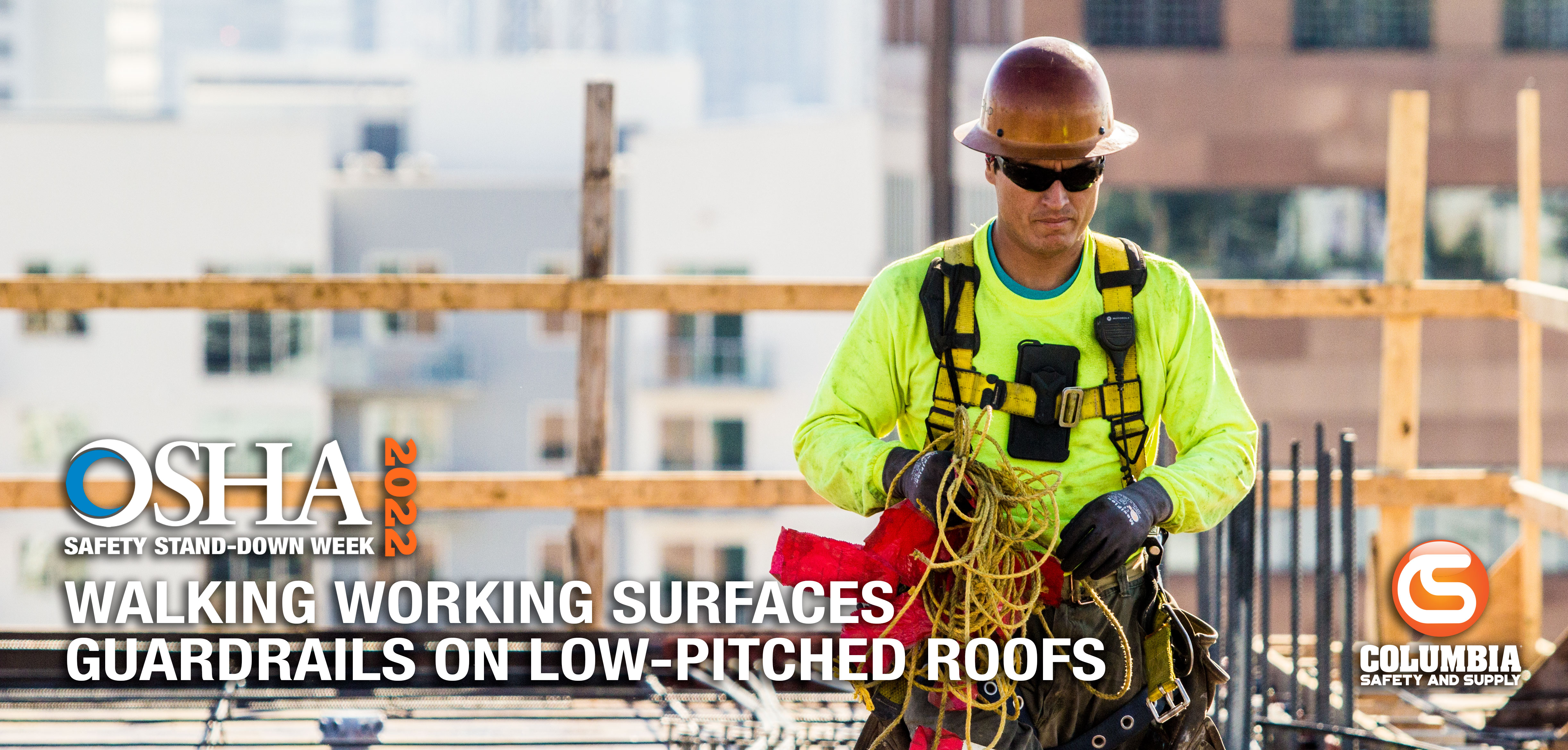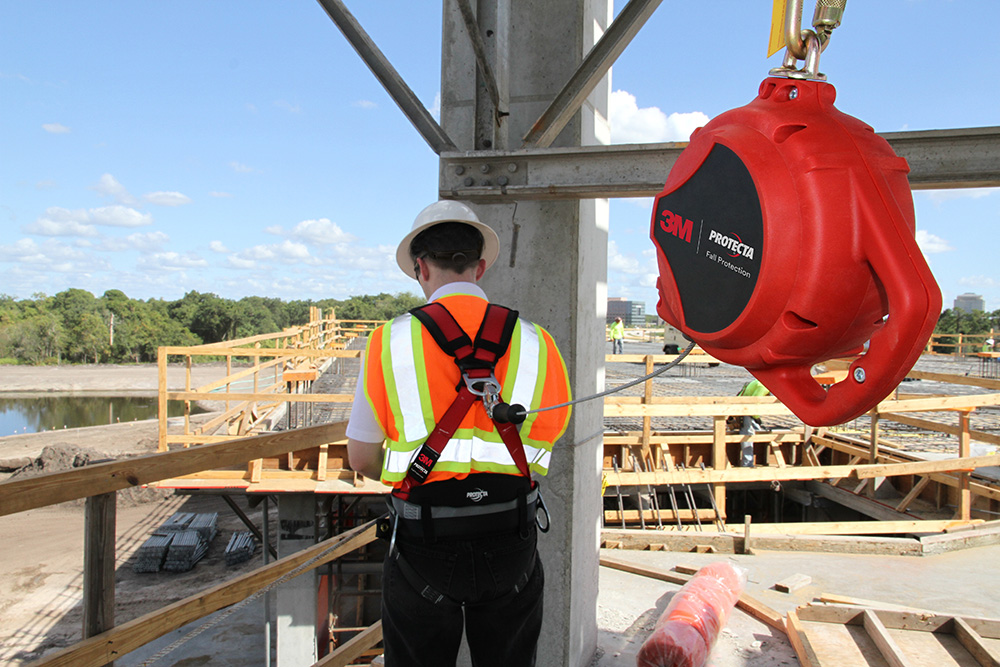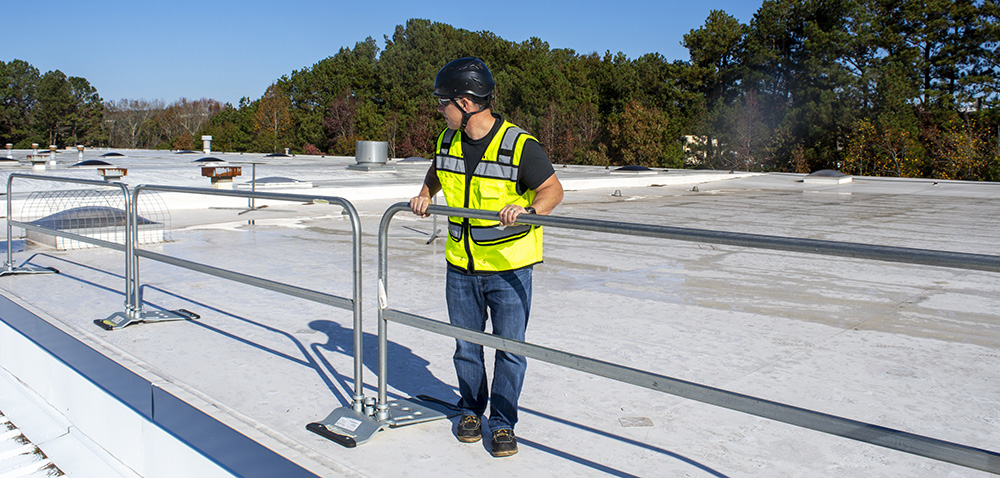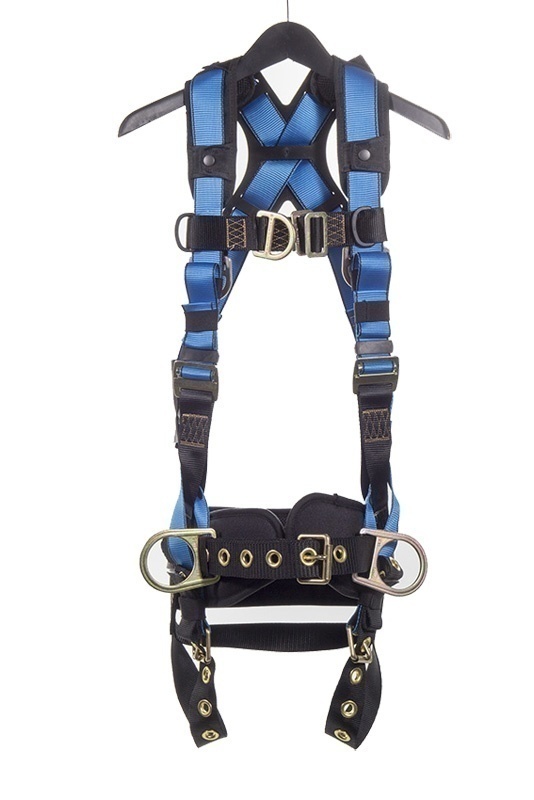YOU HAVE NO ITEMS IN YOUR CART.
Featured Manufacturers
Columbia Safety and Supply Safety Stand-Down Week 2022: The Roof! The Roof!
Day Two
OSHA 29 CFR Part 1910 Subpart D Overview and How It Applies to Guardrails on Low-pitch Rooftops

The Hierarchy of Fall Protection
In the hierarchy of fall protection, passive fall protection is the preferred method after removing all possible fall protection hazards. Passive fall protection systems do not move or change once installed. They do not require active participation from the worker or a personal fall arrest or restraint system. That being said, not all rooftops allow for a permanent or temporary passive fall protection system. The frequency of work required on rooftops should also be considered when deciding on fall protection systems.

The Zones
There are three different zones to consider when deciding how to safely perform rooftop work:
- Less than 6’ to edge - A guardrail system, safety net system, travel restraining system, or personal fall arrest system must be used.
- 6’ to 15’ to edge - a designated area can be used if the work is both infrequent and temporary.
- 15’+ to edge - No fall protection is required provided the work is both infrequent and temporary, and a work rule is implemented and enforced to prohibit employees from going within 15’ of the roof edge without fall protection in accordance with the above bullet points.
The second bullet point, 6’ to 15’ to the edge of a rooftop, is the most common situation most industries will find themselves working in. This is also where guardrails are the best option for a passive fall protection system when setting up a designated area. These situations are common when doing roof top work for telecom workers establishing and maintaining antennas, as well as HVAC maintenance, electricians, construction professionals building new structures and general contractors performing maintenance on rooftops.
What Are the OSHA Standards for Guardrail Systems?
Guardrails can be made of many different types of materials: wood, steel, wire rope, and composites.

The guardrail top rail must be able to withstand 200 lbs of downward and outward force. It must be 42” tall or minus 3” as measured adjacent to the rail. The top height may exceed 45 inches, provided the guardrail system meets the other requirements.
The guardrail midrail, screen, mesh, intermediate vertical members, solid panels, or equivalent intermediate members shall be installed at a height midway between the top edge and the walking-working surface and must be able to withstand 150 lbs of downward and outward force.
Screens and mesh shall extend from the working-working surface to the top rail and along the entire opening between top rail supports. Vertical members shall be installed no more than 19” apart. Other intermediate members, like midrails, shall be installed no more than 19” apart. These midrail, screens, vertical members, solid panels, etc., must be capable of withstanding, without failure, a force of at least 150 lbs.
Another important item to note in this standard is that guardrail systems shall be smooth-surfaced to protect employees from injuries like punctures and lacerations. The ends of top rails and midrails should not overhang the terminal posts, except where the overhang does not pose a projection hazard for employees.
There are many premade options on the market for guardrail systems which are easy to set up, tear down, and are modular to adapt to many different jobsite situations. Our Gear Experts® are experienced in recommending and advising on the requirements for these types of scenarios and can even coordinate with manufacturers for consultation if needed.
Questions or Need More Info?
If you have any questions regarding the above information or need more insight into safety or fall protection in general, reach out to our Gear Experts®! Click here to contact our team, or use the instant chat feature in the lower right hand corner of your browser screen. Also be sure to connect with us on social media to keep up with all of our latest content.










